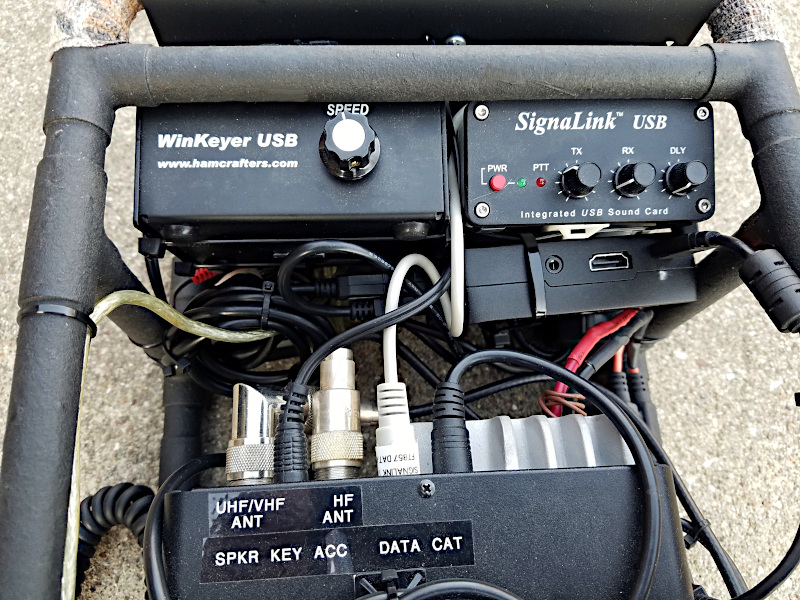I made the Go-frame out of 1/2 inch copper pipe, and then painted it black. I have seen others use PVC pipe, but I wanted something more substantial.
The photo below shows the WInkeyer, the Signalink, and the Raspberry Pi computer just below the Signalink. This is photo is the rear of the Go-Frame:

The Raspberry Pi computer runs headless, that is there is no monitor, keyboard or mouse. When it boots up, it looks for a wifi connection for my house. If it can’t connect, it then creates its own WiFi Hotspot. Either way, I then use an iPad and VNC software to connect to the Raspberry Pi. The VNC software on both the Raspberry Pi and the iPad gives the appearance of having a monitor, keyboard, and mouse connected to the Raspberry Pi.
The concept of running the Raspberry Pi computer headless came from KM4ACK’s series of videos on Youtube. There is a wealth of information there, and well worth subscribing to his channel.
One thing I did on my Yaesu FT-857D, as you can see in the photo is added labeling to the top of the rig of the rear connections.This makes it easier for wiring and any troubleshooting in the field if I need to.
Some really useful ideas in here. Thanks. I’m stuffing mine in a Pelican-type IP75 enclosure. 73’s de AD6AE
Thanks! There are so many ways to make a go box. I have seen a lot of Pelican-type go boxes, and hey all look great. I’m sure yours will work out as well.
— Mike WB8ERJ